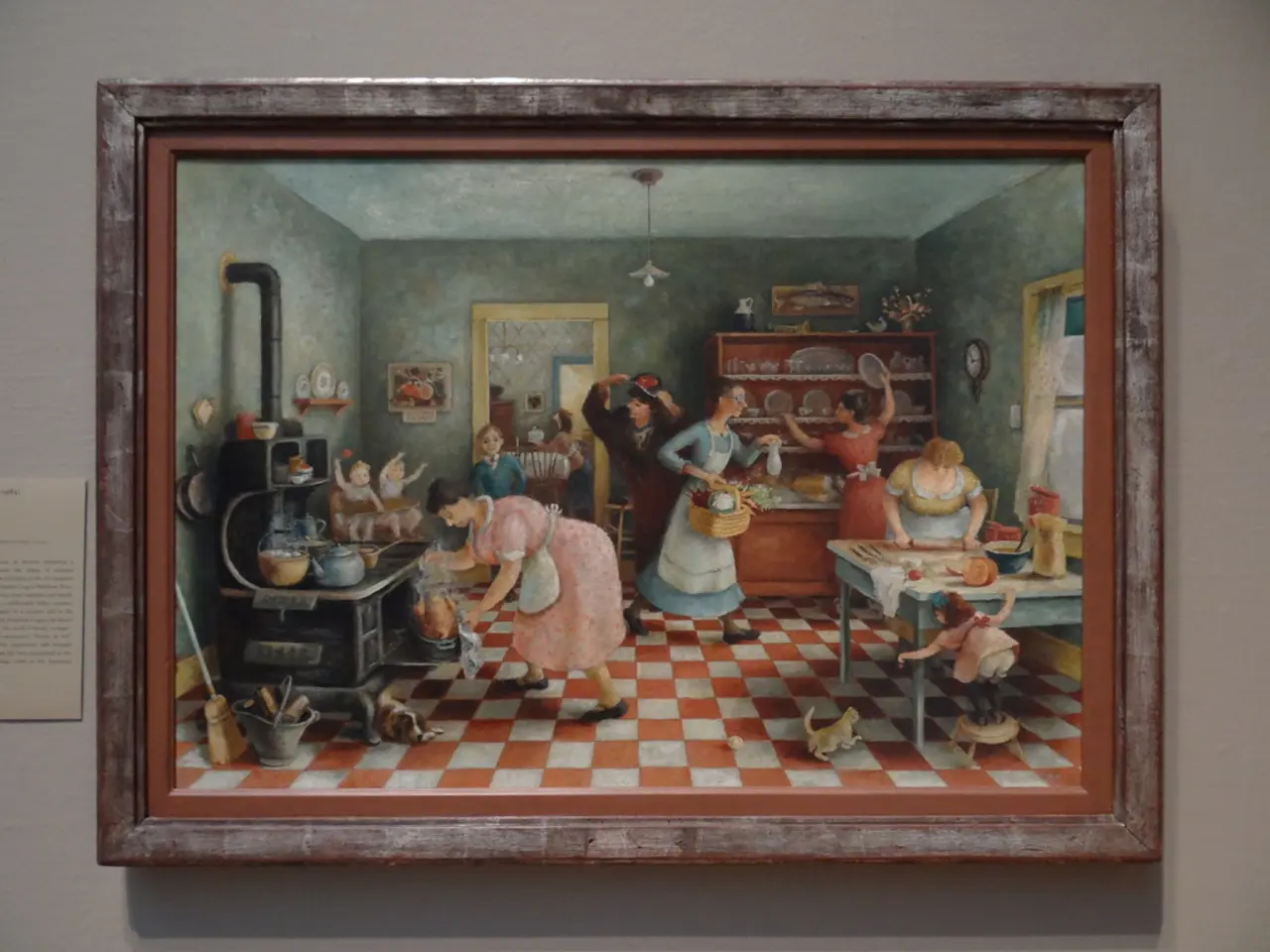Comfort Zones and Creative Sparks: The Peculiar Shelters of the Brain
In the realm of creativity, finding the perfect balance between routine and spontaneity is akin to striking gold. According to recent studies, familiarity and routine contribute significantly to imaginative thinking and creative flow.
By providing a stable framework, routine allows the brain to switch efficiently between focused analytical thinking and spontaneous, free-flowing idea generation. This balance is crucial, as it anchors attention and keeps the mind accountable while freeing cognitive resources for the brain's default mode network (DMN) to engage in mind-wandering, daydreaming, and envisioning new possibilities.
This interplay between the DMN, which fosters imaginative thinking, and the executive control network (ECN, which applies focus and refinement), is essential for creativity. Effective network switching between these modes, often facilitated by predictable routines, enhances access to diverse ideas and innovative insights.
Historically, routines have sparked innovation in the minds of some of the world's most creative individuals. Writer Haruki Murakami, for example, maintains a strict daily routine involving early morning runs and focused writing periods, creating a mental rhythm that aids his creative flow. Similarly, composer Ludwig van Beethoven adhered to precise daily habits, including strict exercise and diet schedules, believed to help sustain his inventive output.
However, it's important to note that too much reliance on routine can stifle creativity. A balanced approach, such as 80% routine and 20% disruption, can create a creative home base. This balance allows for exploration of known ground more deeply, leading to breakthroughs.
Moreover, the comfort zone, often associated with monotony, can be a creative ground. Repetition becomes ritual, stillness becomes space, and the familiar becomes a launchpad instead of a limit. The comfort zone, when intentionally shaped, can support creativity by designating a specific space, using consistent cues, and protecting that space from multitasking or unrelated activity.
In addition to establishing a routine, certain supplements, such as Citicoline, L-tyrosine, Rhodiola rosea, and nootropics, can support the mental conditions that the comfort zone offers, such as consistency, endurance, and emotional balance.
Research suggests that stability and routine, when used intentionally, can foster imaginative thinking. So, giving oneself permission to stay put, embrace routine, and find rhythm can reveal original ideas hidden in familiar spaces. Repetition in daily routines can anchor the body, freeing the mind to roam beyond the ordinary.
In conclusion, while it may seem counterintuitive, a well-balanced routine can be a powerful tool in fostering creativity. By intentionally shaping our comfort zones and embracing familiarity, we can unlock our imaginative potential and pave the way for innovative breakthroughs.
- To excel in creativity, one must find the equilibrium between consistency and spontaneity, a feat similar to discovering gold in a realm.
- Research indicates that routine significantly contributes to imaginative thinking and creative flow, offering an efficient switch between focused and free-flowing idea generation.
- The balance between the brain's default mode network (DMN), fostering imaginative thinking, and the executive control network (ECN), applying focus and refinement, is essential for creativity.
- Historically, routines have sparked innovation in the minds of creative icons like Writer Haruki Murakami and Composer Ludwig van Beethoven.
- Overreliance on routine can hinder creativity, so a balanced approach of 80% routine and 20% disruption can serve as a creative foundation.
- The comfort zone, typified by monotony, can be a creative haven when intentionally shaped, transforming repetition into ritual, stillness into space, and familiarity into a launchpad.
- Nootropics, Citicoline, L-tyrosine, Rhodiola rosea, and certain supplements can support the mental conditions offered by the comfort zone, including consistency, endurance, and emotional balance.
- Research implies that intentionally embracing routine and finding rhythm can unveil hidden original ideas within familiar surroundings.
- In the world of health-and-wellness, mental health, finance, business, careers, and education-and-self-development, particularly personal-growth, routine can be a powerful catalyst for innovative breakthroughs.
- By intentionally shaping our comfort zones and adhering to familiarity, we can unlock our imaginative potential and pave the way for groundbreaking creative discoveries.
- In education-and-self-development, understanding the role of routine in fostering creativity is crucial, as it can unlock a wealth of untapped creative potential, driving innovation and personal growth.




